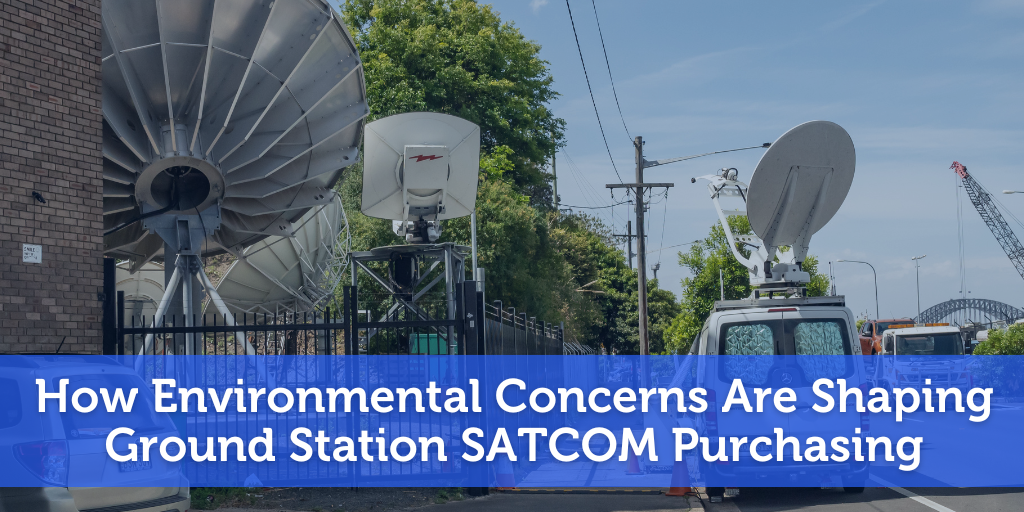In SATCOM, the biggest and easiest sustainability wins happen on the ground—where operators and customers can directly impact efficiency and cost. Teleports and ground stations use a lot of power, making them a prime focus for improving energy efficiency, meeting sustainability goals, and keeping utility costs in check.
Based on what we’re seeing in the industry, here are six ways environmental priorities are shaping ground station purchases.
1: Smarter Power Monitoring and Orchestration
You can’t improve what you can’t measure. Today’s monitoring tools give operators a clear, detailed view of power use across every rack, high-power amplifier (HPA), and cooling unit.
- What buyers look for: Systems that pair IoT sensors with orchestration software to spot inefficient hardware, consolidate workloads, and power down gear when it’s not needed.
- Why it matters to customers: Cuts wasted energy right away and provides the data needed to make the case for future hardware upgrades.
2: Renewable and Hybrid Power Integration
Most facilities can’t run 100% on renewables, but many are easing grid demand and keeping costs steady with on-site generation and smarter energy sourcing.
- What buyers look for: Ground equipment built to run dependably on solar-assisted or hybrid power setups.
- Why it matters to customers: Lowers operating costs, boosts resilience during outages, and helps meet customer sustainability commitments.
3: High-Efficiency Hardware Upgrades
Older HPAs, UPS units, and HVAC systems are often the biggest energy hogs in a teleport.
- What buyers look for: Gallium nitride (GaN) HPAs, energy-efficient UPS systems, and cooling setups that use free cooling or hot/cold aisle containment.
- Why it matters to customers: Cuts utility costs, extends equipment life, and reduces the load on backup power systems.
4: Virtualization and Equipment Consolidation
Swapping out racks of hardware for cloud-based software or consolidated platforms cuts down on equipment—and slashes cooling and power needs.
- What buyers look for: Solutions that deliver the same performance and redundancy with less on-site hardware.
- Why it matters to customers: A smaller footprint, lower energy use, and easier paths to scale.
5: Site and Infrastructure Design Choices
Everything from antenna placement to shelter insulation can influence long-term energy use.
- What buyers look for: Vendors that provide modular, space-efficient layouts, well-insulated enclosures, and optimized waveguide runs to cut transmission loss.
- Why it matters to customers: Lowers lifetime operating costs and boosts environmental performance—without compromising uptime.
6: Low-Impact Lighting and Ancillary Systems
In a 24/7 operation, even “non-core” systems like lighting and water heating can add up.
- What buyers look for: LED lighting with automated controls, solar thermal panels for hot water, and waste-heat recovery from HPAs.
- Why it matters to customers: Delivers quick ROI while supporting sustainability targets and customer reporting.
Build Sustainability Into Your Ground Station Strategy
In SATCOM, sustainability isn’t just good PR—it’s a real advantage for cutting costs and staying competitive. The sooner you factor environmental performance into your plans, the more opportunities you have to lower expenses, meet customer requirements, and extend the life of your equipment.
Chris Steph, SATCOM expert at Radeus Labs, helps operators find practical ways to boost efficiency and shrink their environmental footprint through smarter ground station design and purchasing decisions. He can walk you through high-efficiency hardware options and pinpoint upgrades that deliver quick returns while setting you up for long-term resilience.
We encourage you to book a call with Chris to talk through your procurement priorities and explore how to build a stronger, greener SATCOM strategy.





